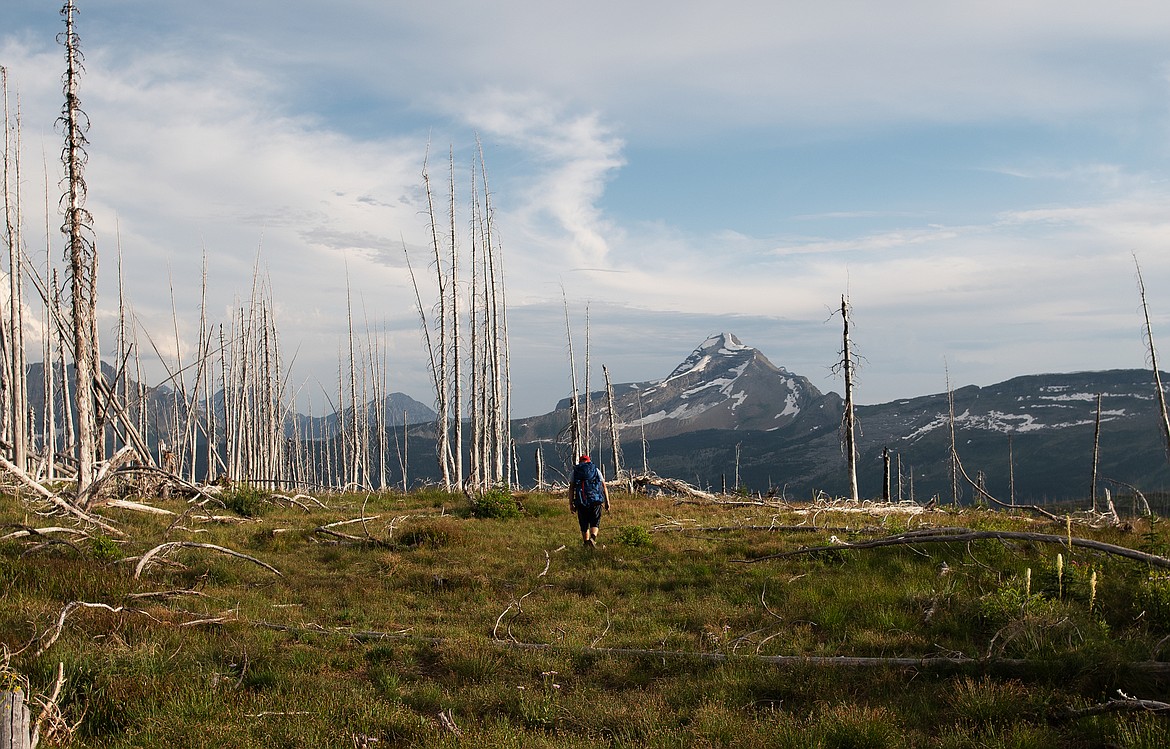Outdoors: Ridge 6324
Heat in the 90s. Horseflies and another little fly, not quite a black fly, that burrowed into my arms and drank my blood and then mosquitoes, more than I’ve seen in a very long time.
That pretty much sums up a weekend excursion to Flattop campground in Glacier National Park.
It also sounds wonderfully unpleasant, and it was. Except that it’s still the park and it’s still West Flattop, which is a cool little camp to drop a tent and then go exploring from.
The camp itself is nothing to write home about, sort of cradled between two ridges. We’d been up the actual ridge of West Flattop a few years ago — it’s worth the minimal effort it takes to get up there.
This time we chose ridge 6324, which is to the east of camp. I thought the bugs up high would be better. They were worse. It’s been a long time since I’ve seen clouds of mosquitoes, but there they were, in full force.
Still, the ridge had great views and big flocks of pine siskins. More pine siskins than I’ve ever seen in one place. These cheerful little birds look gray and drab from a distance, but have streaks of yellow up close. They have a distinctive call that sounds more like a bug than a bird.
They primarily eat seeds and I have to think they were dining on the fields of arnica and other wildfowers that were nearing the end of their bloom cycle and entering the seed phase.
The West Flattop area (the park calls the campground Flattop, but there’s actually two flattop peaks in the park. One in the west and the other in the east near St. Mary) burned twice. Once in the West Flattop Fire in 1999 and then again in the Trapper Peak Fire of 2003.
The snags of those fires miraculously stand today. The regeneration of new forest has been achingly slow. High elevations are a tough place to grow and most of the post-fire trees are only knee high, if that.
Still, someday the forest will return, but I’ll be long gone before it provides any sort of shade at Flattop campground.
If you go, the hike is about 5.7 miles to camp and more once you start poking around. You can do it as a day hike, as well, though I’d suggest picking a day that’s not in the 90s. The exposed rock absorbs the heat and we drank nearly a gallon of water apiece en route to the top.

